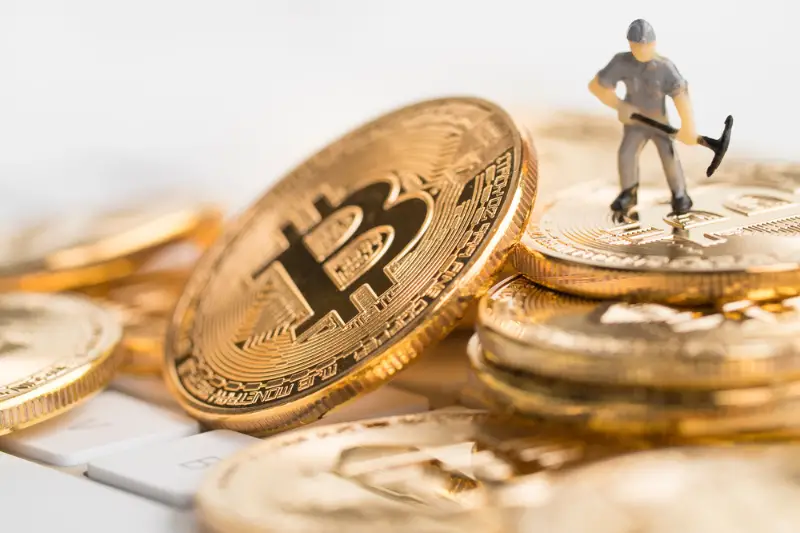Click here to get this post in PDF
Mining pools play a crucial role in the Bitcoin ecosystem, optimizing their strategies based on transaction fees. These decisions significantly impact transaction speed and costs, necessitating an understanding of their interplay for both miners and regular users. Decentralization discussions aside, traders can explore platforms to better understand the ever-shifting crypto market. Make sure you get started today and use AI based features to make informed decisions. In addition, if you are into crypto investment, you may consider knowing about Bitcoin as Digital Gold.
Incentive Structures: How Bitcoin Fees and Mining Pools Shape Behavior
In the intricate ecosystem of Bitcoin, both transaction fees and mining pools play pivotal roles in driving actions and decisions. At its core, the incentive structure of Bitcoin is constructed to motivate miners to validate and add transactions to the blockchain. This is where transaction fees come into play. Miners are not just rewarded with newly minted Bitcoins, but they also receive the fees associated with the transactions they validate. This dual-source of income ensures that miners are compensated even when the block reward diminishes over time due to Bitcoin’s halving events.
Mining pools, groups of miners who combine their computational power to increase their chances of discovering a new block, further amplify the significance of transaction fees. For individual miners within a pool, the rewards are typically split based on contributed computational power. The aggregation of fees from multiple transactions offers a more consistent and stable income compared to the sporadic nature of block discovery. Therefore, mining pools often prioritize transactions with higher fees, as it maximizes their collective earnings.
However, this emphasis on transaction fees has a ripple effect. For Bitcoin users, it means that during times of network congestion, those willing to pay a higher fee can have their transactions processed faster. Conversely, users who opt for lower fees might face delays. This dynamic creates an environment where users and miners constantly adjust their strategies based on current network conditions, fees, and the actions of mining pools.
Understanding this interplay is crucial for anyone involved in the Bitcoin network. The symbiotic relationship between miners, pools, and transaction fees is a testament to the delicate balance of incentives that underpins the world’s premier cryptocurrency.
Mining Pool Strategies and Transaction Fees: A Deep Dive into Prioritization and Impact on Users
Mining pools have long been a staple in the Bitcoin network, providing individual miners with a more predictable income stream and increased chances of earning rewards. But how do these pools decide which transactions to process first, and what does it mean for regular users? The answer, in large part, lies in transaction fees.
Transaction fees act as a sort of auction system on the Bitcoin network. Users attach fees to their transactions as an incentive for miners to prioritize and validate them. Consequently, mining pools, always in the pursuit of maximizing their profits, have developed strategies to prioritize transactions based on these fees. Transactions with higher fees attached are often processed faster, while those with lower fees might be left waiting in the mempool, especially during times of network congestion.
This fee-based prioritization by mining pools has a direct impact on users. For those who desire quick transaction confirmations, especially during busy periods, they might find themselves compelled to attach higher fees. This can lead to periods where transaction fees surge due to heightened demand. On the flip side, users who are less time-sensitive might opt for lower fees, understanding that their transaction might take longer to be confirmed.
Moreover, while this fee market ensures that miners are incentivized to keep the network secure and operational, it also introduces a level of unpredictability for users in terms of transaction costs and wait times. This dynamic necessitates a keen understanding of the current network conditions and fee landscape for anyone transacting on the Bitcoin network. It’s a delicate dance between mining pool strategies and the desires of individual users, with transaction fees playing the central role in guiding the rhythm.
Conclusion
The delicate balance between mining pool strategies and transaction fees underscores Bitcoin’s complex dynamics. For the network to thrive, it’s imperative for participants to stay informed, ensuring smooth transactions and a secure blockchain environment. Thanks for reading this guide till the end and I hope the guide is useful and informative.
You may also like:
DNMiner’s new way to get rich in the cloud: you are only one platform away from being a mining boss!
Guideline for Bitcoin Mining Safety Risk
Image source: Depositphotos.com

